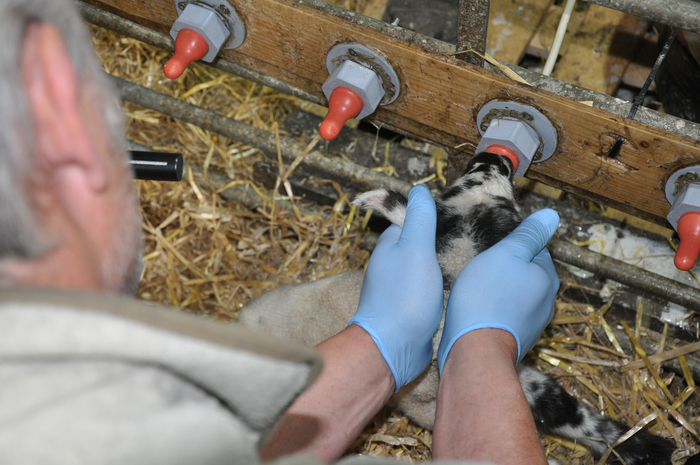With the Brexit deadline looming and uncertainty still surrounding the future status of valuable European export markets, more than 90% of UK sheep producers say it will be very important to rear as many lambs born alive as possible in 2019.
That’s according to the latest research carried out by Volac to examine surplus lamb rearing intentions and practices. Over 500 (521) farms participated in the online survey. More than 51% of farms surveyed see an opportunity to rear more lambs artificially next year with 85% of units now saying they have a system in place to carry out this task.
Volac’s technical officer, Abi Erian, says the survey findings give an interesting insight into UK surplus lamb rearing in both small (<100 ewes) and larger (>250 ewes) flocks.
“Not surprisingly, in the main the lambs being reared artificially are those from triplet-bearing ewes, together with any orphans. On the whole just under 80% of farmers say that if a ewe has had triplets one lamb would be removed, although in larger flocks the figure is nearer 90%. Smaller flocks are less likely to remove a third lamb with only 75% of units saying they carry out this practice.
“What is particularly interesting though is the lamb selection choice criteria employed. In larger flocks just under 50% of flocks remove the odd one out in a group of three – which is what we would recommend – whereas only 28% of smaller flocks do this,” says Ms Erian.
“It is always best to leave a balanced pair of lambs on the mother. A mix of criteria are being employed to make the choice, with the most favoured approach being removal of the weakest lamb (19% of units). Other norms include always taking the strongest lamb (17%), or the smallest (15%). Just under 6% of farmers say they typically select the largest triplet, a similar proportion said they tend to remove a male lamb with just under 1% saying they generally take a female.”
Interestingly, across the whole sample more than 68% of farmers would also consider removing a lamb from a twin-bearing ewe lamb to take the pressure off and allow her to keep milking and growing. However, larger flocks (78%) are more likely to carry out this practice than smaller flocks (64%).
Colostrum feeding
When it comes to feeding colostrum, 82% of producers say they always administer it to any fostered lambs within six hours of birth with smaller flocks seeming to show slightly better attention to detail in this respect. However, it seems that only around one in four larger flocks (26%) and one in five smaller flocks (21%) are feeding enough.
“All surplus lambs must be fed good quality colostrum as soon as possible after birth – and preferably start receiving this essential nutrition within the first two hours of life (50ml/kg liveweight per feed) and ingest a minimum of 210ml/kg liveweight in total within the first 24 hours,” said Ms Erian.
More than a third of flocks use artificial colostrum with only 6% stripping colostrum from other ewes to feed to orphan lambs.


